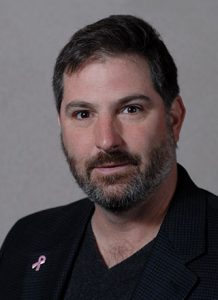October 31, 2021

Rectenna are combination antenna-diode that possess great utility in converting high-frequency, i,e, 10s-100s terahertz (1012 cycles per second), energy, into electricity. This conversion can happen either in terms of direct irradiation from sunlight, or indirectly through blackbody waste heat from hot processes, into direct current (DC) electronic power. This waste heat accounts for losses of the factor of 45% in the global energy portfolio. By harvesting this waste heat and transforming it into usable electricity, one is able to enhance the efficiency at power plant turbines, recover heat from industrial processes, charge electrical devices and even wick heat away from the body through clothing. Before society can reap the benefits, though, researchers need to increase the performance of the antenna-diode couple.
Patrick Pinhero, a professor and former department chair of chemical engineering, is working on a way to harvest this terahertz energy using three-dimensional metamaterials as an enhancement lens between the antenna and the diode. He and co-authors outlined their work in a paper published recently in the Journal of Vacuum Science & Technology.
“The point of the paper is to demonstrate that our metamaterials are appropriate for use in a rectenna device, which is used to harvest waste heat form the environment and convert it into electricity,” he said.
The rectenna is a bowtie antenna that collects the focused electromagnetic radiation from the metamaterial and then feeds this alternating current (AC) into a terahertz diode producing an electrical direct current (DC). The metamaterial consists of copper electrodeposited onto a photolithographically-patterned SU8 photoresist that acts as a dielectric. One of the major achievements in the paper was to equate experimental measurements with finite element modeling (FEM) to nail down the geometric configuration of the netamaterial device in order to maximize its efficacy. Another paper authored by Pinhero and his team demonstrated the intricacies of the fabrication process.
“The device does two things for us,” Pinhero said. “First, it helps focus waves of infrared energy into the source or focal point of our antenna. The other thing it does for us is localizes or compresses the density of states together. What that does is intensifies the energy into a smaller bundle and increases the brightness.”
While Pinhero stressed that more research and development is needed, harvesting waste heat for the production of electricity has numerous potential applications.
For instance, placing these devices on turbines at powerplants, waste heat could be converted into electricity, increasing the efficiency of the plant by 1% to 2%. Installing them at solar towers could augment efficiency by 1% to 3%.
“When you deal with gigawatts of power, that’s quite a lot of power,” he said.
Pinhero’s team has also explored application for consumer electronics and charging stations.
Pinhero is a co-founder of Redwave Energy, a company around his previous groundbreaking developments on Antenna Coupled Terahertz Film. The company, based in Boulder, Colorado, manufactures devices to convert heat into electrical power. The company received Red Herring Top 100 Global Award in 2018, a prestigious R&D 100 award in 2018, and two NASA Nano50 Awards in 2007.
His recent paper, “Optimization of three-dimensional metamaterials for terahertz energy harvesting,” was part of a special collection commemorating the career of Patricia Thiel, a Distinguished Professor of Chemistry at Iowa State University known for her research on atomic-scale structures and processes on solid surfaces. She passed away in September 2020.
It was especially personal for Pinhero, as Thiel was his post-doctoral advisor in the Ames Laboratory at Iowa State.
“Pat Thiel was a pioneer in science,” he said. “She was quite a unique and fantastic individual, a treasured mentor for me, and that was one of the inspirations for publishing this paper.”